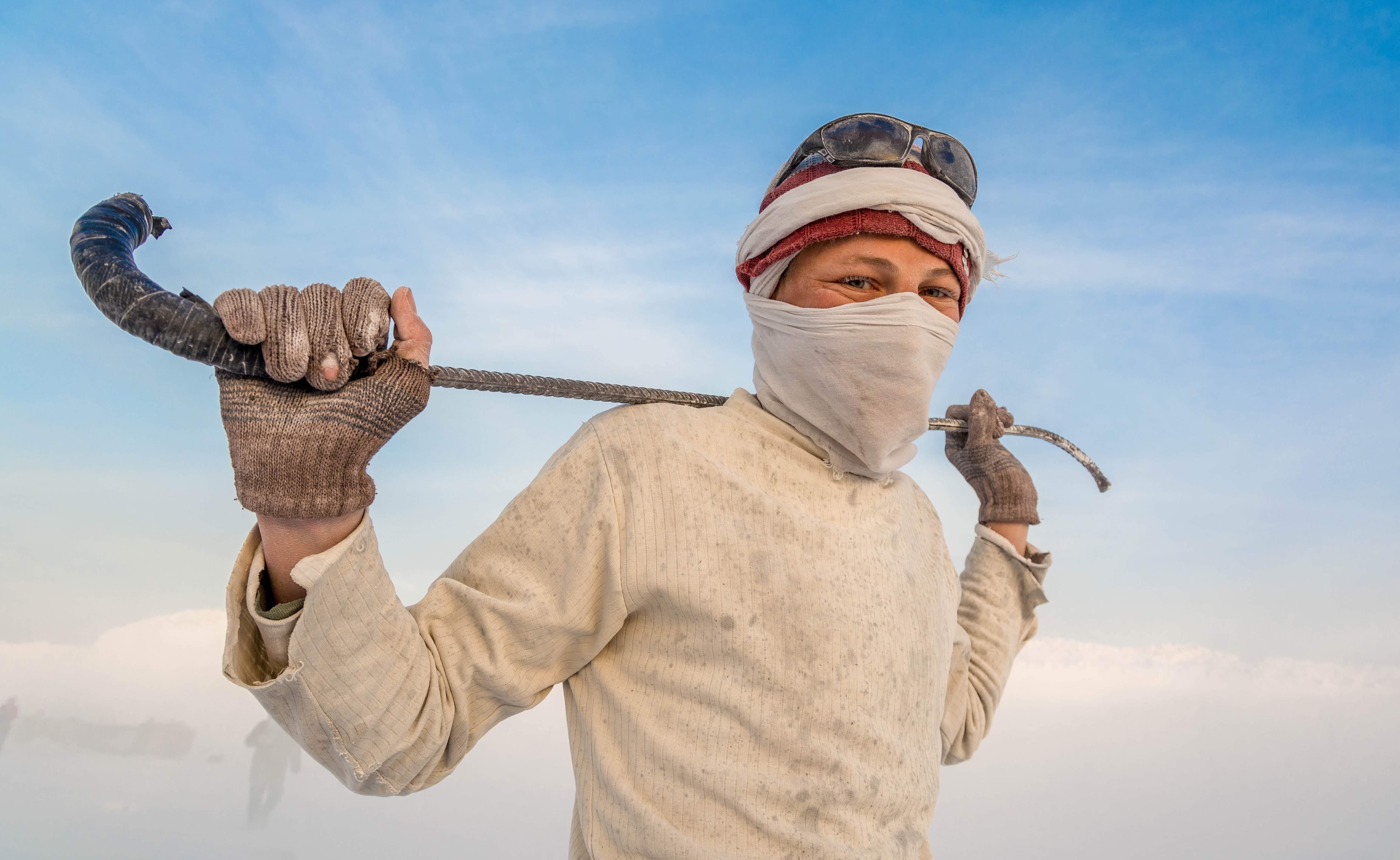Pictures from Africa Show How Digital Technology Transforms Lives
Women in the Middle East and North Africa are among the most financially excluded in the world: only 35 percent have a financial account compared with 65 percent of women globally. Findex doesn’t even have statistics on financial inclusion for Sudan, a country ripped apart for half a century by civil wars that have left many of its citizens deeply impoverished, trying to scrape a living from the arid land.
Against these facts, the image of a young Sudanese woman from a rural area clutching a smartphone to her chest, gazing into the horizon, grabs one’s attention. A look of determination marks her face, and the shimmering fence behind her gives the impression that she has crossed a barrier. The three-judge panel chose this photograph as the Grand Prize Winner in CGAP’s 13th Annual Photo and Video Contest on financial inclusion for the way it powerfully conveys how digital technologies can bring new opportunities for women.

“The phone is an important tool that gives her possibilities. She is holding it as if she is thinking, ‘This will take me wherever I want to go,’ making the phone an important part of the image, even though it is such a little thing,” said Indira Williams Babic, director of photography at The Newseum in Washington, DC.
“The image is so evocative, yet it is open to interpretation,” said Msia Clark, associate professor of African studies at Howard University. “The way she is holding the phone, it symbolizes opening up possibilities. The colors are soft, the light shimmers on the chain link fence behind her, it gets lost almost in a haze, and you don’t know whether it is keeping her out or in, or is it for her protection?”
Hesham Fathy, an Egyptian who specializes in portraiture and street photography, took the image on a visit to Sudan in 2018. Fathy said he was struck by the prevalence of communications technology, even in poor areas, but rarely among women. He was struck by this young woman’s firm grasp on her phone, like a tool that puts the whole world into her hands. She was using WhatsApp, he said.
Rebecca Waghorn, development adviser at UKAID Department for International Development, said the photo illustrates the importance of reaching women. “Although as a sector we have made great progress overall in financial inclusion, the gender gap persists and is growing in some countries. In this photograph, it is great to see the young woman’s adoption of mobile technology,” Waghorn said.
For its 2018 photo and video contest, CGAP sought images exclusively from Africa. Why Africa? Because it is a center for financial innovation, and yet financial exclusion levels there remain high at 57 percent, according to the 2018 Findex data. Kenya a decade ago launched M-Pesa, the mobile money service that revolutionized digital financial services and helped lift many thousands of households from poverty. Since then digital credit, savings and insurance products have spread across the continent. Exciting experiments are underway to use digital payment platforms as a vehicle to improve crop yields, bring solar energy to rural communities and expand access to clean water. At the same time, Africa is the continent with the largest share of people in the world in extreme poverty – 389 million living on less than $1.90 a day – and its share of the world’s poor is forecast to grow in the next decade.
So for the 13th annual contest, CGAP asked photographers to illustrate the potential of financial services to transform lives in Africa. We sought photos and videos showing how digital finance is reaching people in remote areas, how financial services can spur entrepreneurship and create new opportunities for the growing cadre of young Africans and how digital finance is helping poor people access services and build more resilient lives.
The 614 photographs and 17 videos submitted are testimony to the creativity energy and diversity of the continent, and also to its adaptability. Look at the delight on the face of Irene Ahebwa, a 26-year-old Ugandan mother sitting on her stoop beside her cookstove. It’s an ingenious invention – a clean cookstove fired by brush that has a bright yellow battery attached. The battery is charging both her cellphone and a solar light. Ahebwa bought the device through a microcredit loan that she pays in digital increments from her mobile phone.

Or take the image of Ahmed, 18, emerging from a haze of dust at a stone quarry in Egypt. He wields a steel rod to align limestone boulders for a machine to cut into bricks. It’s grueling and dangerous work, but look into his eyes and they tell a different story.

Or see the quiet strength and independence that radiates from the image of Wavinya, an elderly Kenyan woman swathed in yellow, who carefully tops up mobile airtime for a customer from her yellow roadside stall.

For the first time, CGAP also asked for short videos that depict financial inclusion in Africa. The winner is Grim Zabdiel Mignake who in 40 seconds introduces us to a maize farmer in Togo who could not afford fertilizer. Then he heard about a government subsidy program that disburses e-money payments directly into his mobile wallet. Now the farmer can afford fertilizer, and he has expanded his crop production from a quarter hectare to one full hectare. It is enough to support his whole family.
The photographs are beautiful and evocative, but the videos go further. They invite you albeit briefly to experience people’s daily lives. They show you the dignity of people and the transformative potential of financial services to help the poor improve their livelihoods and expand their horizons.
Explore all the winners in CGAP’s 13th Annual Photo and Video Contest below.

Add new comment